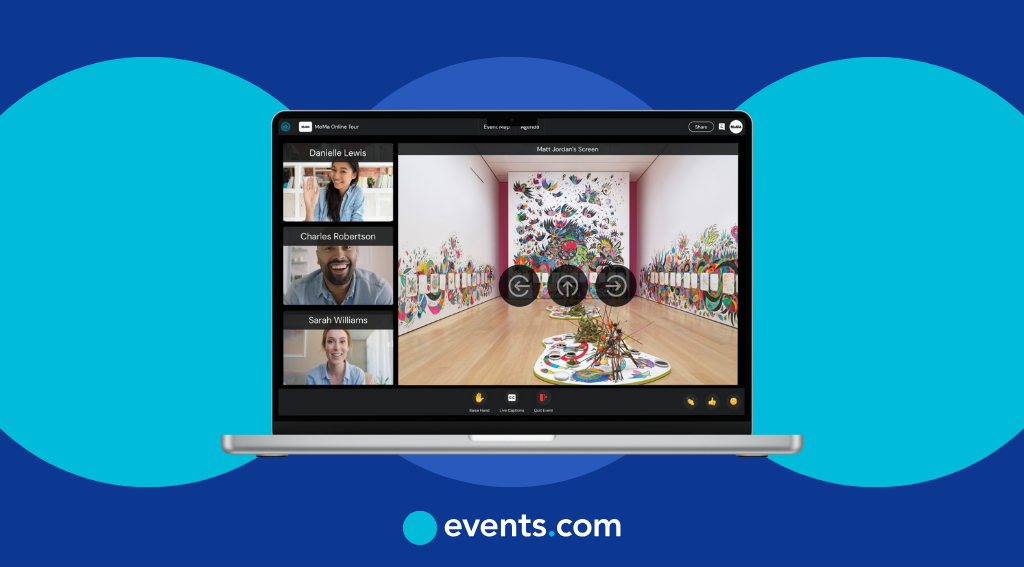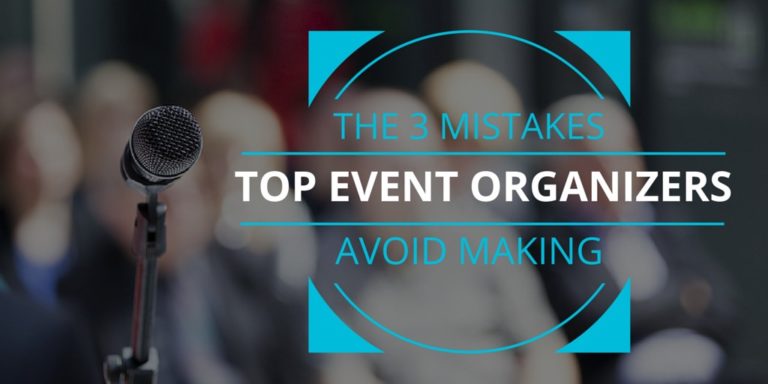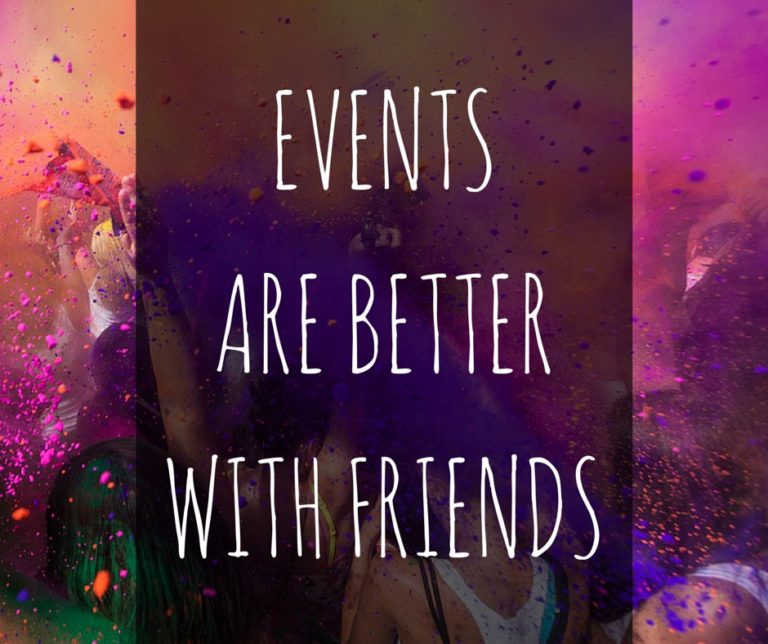In-person events aren’t going anywhere, but they’ve got competition. Virtual exhibitions have stepped up and surged in popularity, changing how we connect, present, and showcase ideas or products. From digital art shows to full-blown online trade fairs, the landscape is more vibrant and accessible than ever before.
This blog walks you through eight types of exhibitions you can successfully take online. Whether you’re curating culture, launching products, or recruiting talent, there’s a virtual format with your name on it.
Why take exhibitions online?
Going online is a smarter, more scalable way to connect and engage with people. Here are a few reasons why it is beneficial:
Expanded reach and accessibility
Virtual exhibitions break geographical barriers, allowing participants from anywhere to join. This inclusivity enables diverse audiences to engage, share ideas, and collaborate, making events more impactful. For example, a small business in Asia can showcase products to buyers in Europe without costly travel.
Cost savings
One of the biggest advantages of going virtual is the budget stretch. Online exhibitions slash major expenses like venue rentals, booth construction, and travel logistics. Organizers can reallocate those savings into content, promotion, or tech upgrades while attendees skip the flights, hotel bills, and commute stress. More impact, less overhead.
Sustainability
Virtual exhibitions tread lightly on the planet. With no need for air travel, printed materials, or massive energy-consuming venues, online exhibitions drastically reduce their carbon footprint. For brands and organizers focused on greener practices, digital-first formats offer a smart step toward sustainability goals.
Data and analytics insights
You can’t track how long someone stares at a painting in a physical gallery or flips through a brochure at a physical booth, but you can online. Platforms offer real-time analytics on booth traffic, content downloads, and user journeys, helping organizers improve the overall content and experience.
On-demand access
Missing the live stream isn’t an issue for an attendee with online exhibitions. Online exhibitions can live on long after they end, doubling as evergreen content libraries in the form of recordings, downloads, and interactive sessions.
8 types of online exhibitions
Explore 8 powerful exhibition formats you can take online with real-world examples to inspire your next virtual experience.
Virtual trade shows
- What it is: The digital twins of traditional expos that can be Business-to-business (B2B) or business-to-consumer (B2C) events. They feature branded booths, product demos, downloadable brochures, and live chat with reps.
- Example: CES 2021, held entirely online, attracted over 120,000 attendees from 160 countries, showcasing innovations in consumer electronics.
Virtual art galleries and museums
- What it is: Beautifully curated collections accessible via scrollable tours or 3D walk-throughs. Perfect for global artists, curators, and cultural institutions to explore art and artifacts from home.
- Example: The Louvre Museum offers virtual tours of its galleries, letting you stroll past the Venus de Milo from your couch.
Virtual open houses and campus tours
- What it is: Guided virtual walkthroughs of educational institutions or properties, often with live Q&A sessions for prospective students or buyers and enabling remote exploration for buyers or renters.
- Example: MIT’s virtual campus tour allows prospective students to explore its campus and learn about academic life.
Virtual fashion shows
- What it is: Digital runways where designers present collections via live streams or pre-recorded videos, often with interactive elements.
- Example: Balenciaga’s VR fashion show during fashion weeks offers immersive collection experiences.
Virtual automotive shows
- What it is: Digital platforms where manufacturers display vehicles with 360-degree views and virtual test drives.
- Example: The Geneva International Motor Show’s virtual platform allows exploration of new car models.
Virtual science fairs and hackathons
- What it is: Platforms for students or developers to present projects, with virtual judging rooms and collaboration spaces.
- Example: Intel International Science and Engineering Fair (ISEF) is one of the world’s largest pre-college STEM competitions. In 2020 and 2021, it went fully virtual with interactive project boards, video submissions, and live award ceremonies.
Virtual product launches and showcases
- What it is: Live-streamed unveilings of new products, often with interactive demos and Q&A sessions to engage audiences.
- Example: Apple’s keynote events are live-streamed globally, showcasing new products like iPhones and MacBooks.
Immersive VR/AR exhibits
- What it is: Exhibitions that leverage virtual reality (VR) or augmented reality (AR) to deliver fully immersive, interactive experiences, often with gamified or exploratory elements to boost engagement.
- Example: The Smithsonian’s “FUTURES” AR experience is a groundbreaking exhibition that uses AR to let visitors explore imagined futures in art, tech, and culture. Users could interact with floating installations, animated artifacts, and narrative overlays through their phones, blending physical and digital seamlessly.
These formats offer opportunities to event organizers to rethink what an exhibition can be. You can go beyond the booth and create experiences that reach your audience where they are and ones they won’t forget.
How to choose the right type for your goals
Selecting the best online exhibition type depends on several factors:
- Audience and objectives: Identify whether your audience is B2B (e.g., trade shows) or B2C (e.g., art galleries) and define goals like lead generation, education, or brand awareness.
- Budget considerations: Assess costs for platform subscriptions, marketing, and technology, ensuring alignment with your budget. Some formats (like VR) require more upfront investment, while others (like webinars) are low-lift.
- Platform capabilities: Choose platforms with features like networking tools, analytics, high-quality streaming, or 3D rendering to meet your event’s needs.
Best practices and tips
To create a successful online exhibition:
- Craft immersive booth experiences: Offer live sessions for real-time interaction and on-demand access for flexibility across time zones.
- Leverage live and On-demand content: Offer live sessions for real-time interaction and on-demand access for flexibility across time zones.
- Use gamification or AR filters: Incorporate polls, quizzes, or AR filters to enhance engagement and make the experience memorable.
- Promote smartly: Don’t rely solely on email. Use social media (including X posts) and partnerships to drive attendance and visibility.
Examples in action: mini case studies
Virtual exhibitions aren’t just ideas; they’re already making waves across industries. These recent case studies prove what’s possible when innovation meets execution.
Case Study: BMW M Mixed Reality Experience
Format: Virtual Reality Driving Experience + Immersive Brand Activation
Overview:
BMW introduced the BMW M Mixed Reality experience, first showcased at Web Summit 2022 in Lisbon, Portugal, offering a groundbreaking fusion of real-world driving and virtual reality. Participants drive actual BMW M vehicles, such as the BMW M2, M4, or i5 M60, while wearing VR headsets (e.g., Meta Quest or Apple Vision Pro) to immerse themselves in virtual environments like city circuits or alien planets. Using precise GPS, vehicle sensors, and real-time data synchronization, the experience merges physical driving with digital tracks, enhanced by multiplayer modes and spectator avatars introduced in 2024. Accessible through the BMW M Driving Experience program, this initiative redefines automotive engagement.
Why it stands out:
Seamlessly integrates real BMW M vehicles with virtual environments, using advanced sensors for precise synchronization.
- Offers diverse virtual tracks, including a Rooftop Circuit and alien planet, with multiplayer and spectator features for enhanced engagement.
- Attracts automotive enthusiasts and tech innovators, showcased at events like Web Summit 2022 and ApeFest 2024.
- Expands BMW’s brand presence by combining high-performance driving with cutting-edge VR technology, bookable as a training experience.
Takeaway:
BMW’s M Mixed Reality experience transforms traditional driving into an immersive, high-tech adventure, proving that virtual reality can elevate automotive brand experiences to new heights, blending physical performance with digital innovation.
Case Study: Balenciaga x Fortnite 2021
Format: Virtual Fashion Show + Immersive Brand Experience
Overview:
Luxury fashion house Balenciaga expanded its digital strategy by launching a metaverse showroom on platforms like Fortnite and Spatial. The brand showcased exclusive collections in fully interactive 3D environments, where users could browse digital outfits, unlock AR experiences, and purchase virtual wearables for avatars; blurring the line between fashion, gaming, and e-commerce.
Why it stands out:
- Combined immersive 3D visuals with gamified product discovery
- Partnered with Epic Games to drive massive cross-platform exposure
- Offered AR filters and NFTs for deeper user interaction
- Drew millions of digital impressions and positioned Balenciaga as a pioneer in fashion-tech crossover
Takeaway:
Balenciaga’s bold leap into virtual fashion proved that digital showrooms are powerful brand playgrounds for the current and next-gen audiences.
From Onsite to Online
Taking exhibitions online isn’t a fallback but a leap forward. Whether you’re showcasing code, creativity, or corporate solutions, there’s a digital format ready to amplify your impact. You’ll keep your audience engaged with the right strategy and platform and might even grow it.
And there’s no better platform than Events.com Virtual to help you take that leap and make sure you land on your feet by taking your event online and making it successful and unmissable. Book a demo today to make your virtual exhibitions more accessible and innovative than ever.
Frequently asked questions about virtual exhibitions
1. Are virtual exhibitions as effective as in-person events?
Yes, when done right. They can offer broader reach and deeper data insights than traditional formats, allowing for creative engagement tools like live chats, AR experiences, and on-demand content.
2. What kind of content works best in a virtual exhibition?
Interactive and visual content shines. Virtual booths and experiences should be easy to navigate and mobile-friendly to keep users engaged across devices.
3. How do I measure the success of a virtual exhibition?
Unlike physical events, digital exhibitions let you track metrics like booth visits, session attendance, and click-through rates to measure success.







